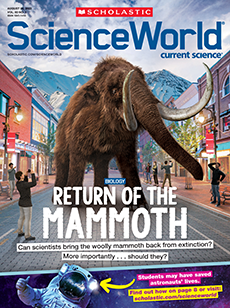In the early months of 2020, How Nam Chung’s school suddenly closed because of the Covid-19 pandemic. The teen was forced to spend the rest of his senior year at home. Like many people quarantining across the country, How Nam was bored within a few weeks. He missed attending The Bronx High School of Science in New York City. He joked to his friends that they could go back to school—at least virtually—if they built a 3-D replica of the entire campus in the video game Minecraft. To his surprise, his friends jumped at the idea.
Early in 2020, How Nam Chung’s school suddenly closed because of the Covid-19 pandemic. The teen had to spend the rest of his senior year at home. People quarantined across the country. Like many of them, How Nam was bored within a few weeks. He missed attending The Bronx High School of Science in New York City. He joked to his friends that they could go back to school—at least virtually. They just had to build a 3-D model of the entire campus in the video game Minecraft. To his surprise, his friends jumped at the idea.

